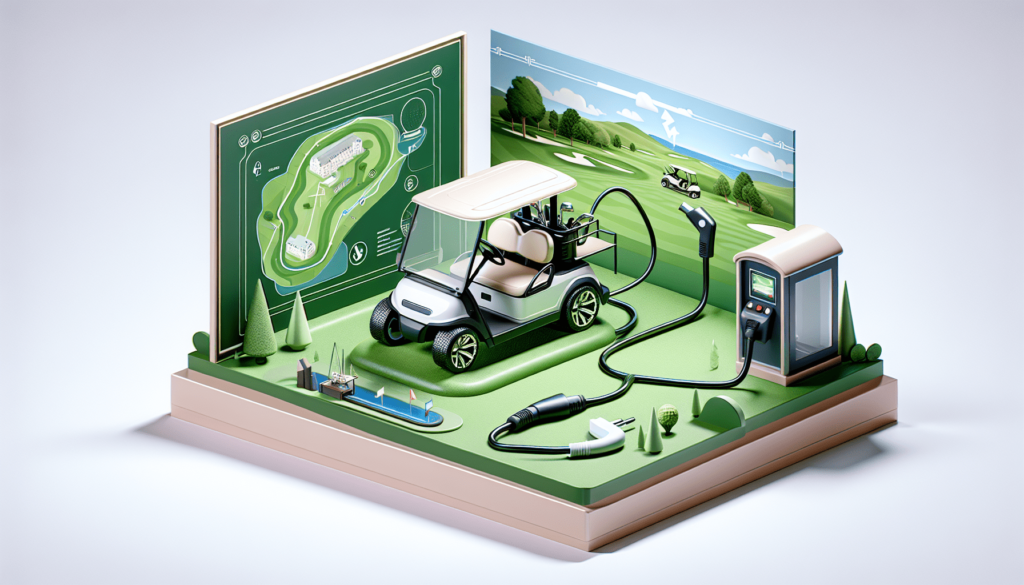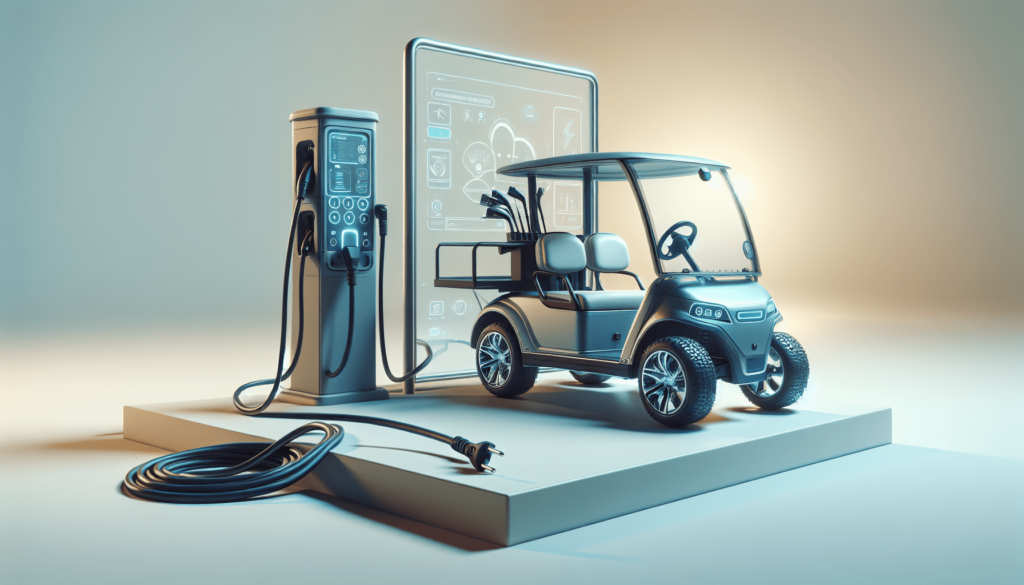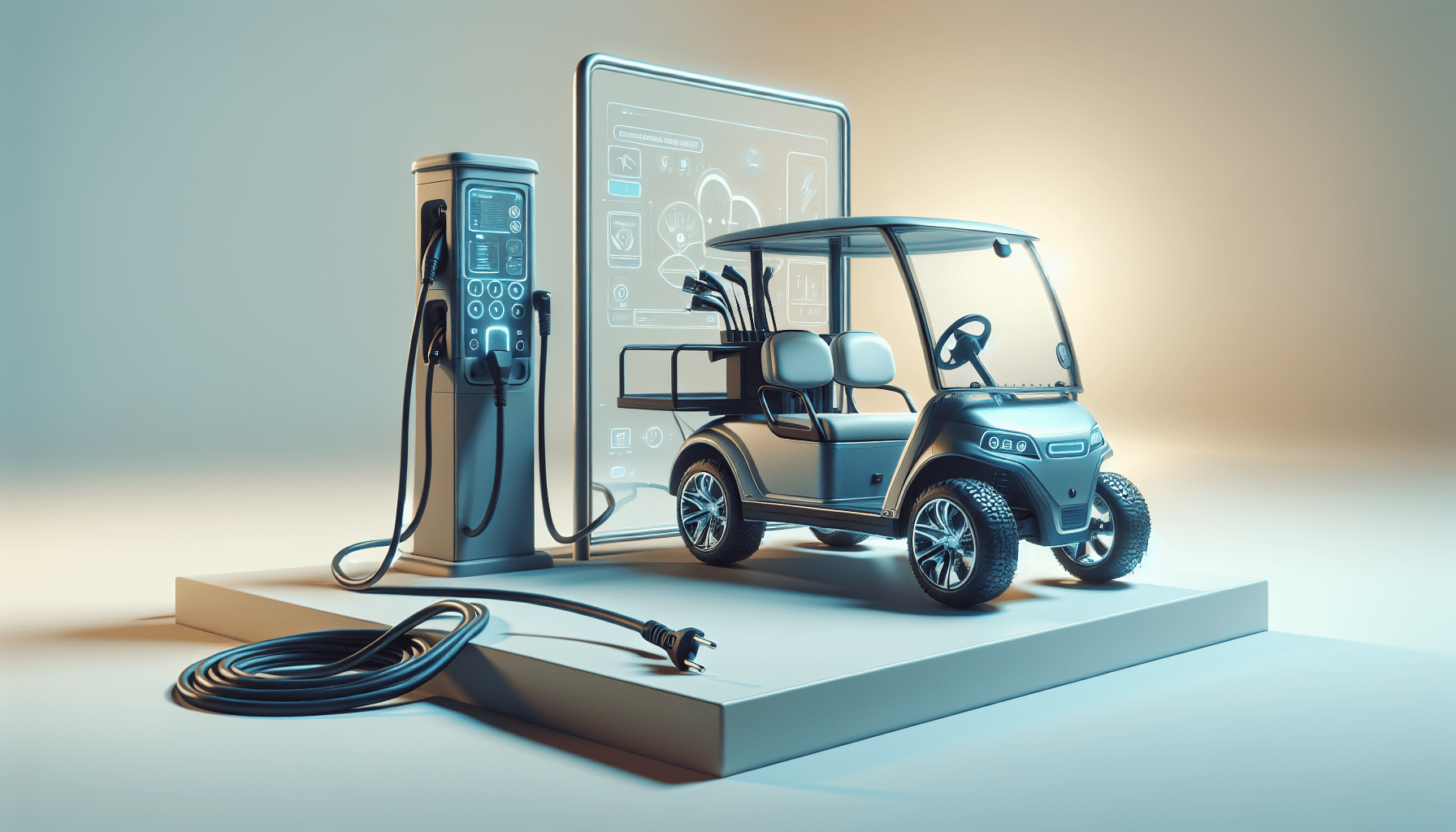As enthusiasts of electric golf carts, we’ve come across one common question amongst aspiring owners – ‘How to charge an electric golf cart and what is the right charger to use?’. With the increasing popularity of these carts, it’s essential to grasp the charging mechanism’s intricacies and the vital factors to consider when picking out the ideal charger. Hence, in this comprehensive piece, we’ll shed light on everything you need to know about the charging process of an electric golf cart. We aim to demystify the process, simplifying it to ensure your golf cart is always ready for motion, so let’s get the ball rolling.

Understanding Electric Golf Carts
All aboard the eco-friendly and quiet journey of the electric golf cart! A staple of golf courses, retirement communities, and large venues worldwide, electric golf carts serve as a convenient mode of transport for short distances. An understanding of their basics can enhance the ownership experience and extend the lifespan of these handy vehicles.
Components of an Electric Golf Cart
Electric golf carts primarily comprise a few essential components. First is the electric motor that powers the vehicle. Next up is the controller, which manages the electrical supply to the motor. The batteries that supply the electrical energy, and the charger that rejuvenates them, are also critical parts of the setup. Finally, the drivetrain enables the transfer of power to the wheels, letting the cart move.
How Electric Golf Carts Work
The operation of an electric golf cart is all about seamless interaction between its components. The batteries supply power to the controller. In turn, the controller governs the amount of power that the electric motor receives, thereby controlling the speed and torque of the golf cart. Once the necessary power is supplied, the drivetrain ensures that it gets transferred to the wheels, enabling the cart’s motion.
Advantages of Electric Golf Carts Over Gas-Powered Ones
Choosing an electric golf cart over a gas-powered one primarily revolves around three assets – environmental friendliness, cost-effectiveness, and noise reduction. Electric carts reduce carbon footprints since they don’t emit pollutants. Their operational costs are also lower, given their reliance on electricity over fuel. Additionally, electric golf carts offer smoother and quieter rides, contributing to a peaceful neighborhood vibe.
Types of Golf Cart Batteries
Batteries play a key role in the functioning of electric golf carts. The two types that you’ll typically encounter are lead-acid batteries and lithium-ion batteries.
Lead-Acid Batteries
Lead-acid batteries are commonly used in golf carts due to their affordability and high power output. These batteries have large plates that facilitate a higher discharge rate, making them suitable for the high power requirements of golf carts. However, they are heavier and require more maintenance than lithium-ion batteries.
Lithium-Ion Batteries
Recently, lithium-ion batteries have gained popularity in electric golf carts due to their superior efficiency and longevity. They’re lighter and require less maintenance as they don’t need to be filled with water like lead-acid batteries do. They also charge faster and last longer, but they are quite expensive in comparison.
Comparing Battery Types
Choosing between lead-acid and lithium-ion batteries depends on your priorities. If cost is a significant factor, the lead-acid ones might be the best option. However, if you favor efficiency, lighter weight, and low maintenance, you might be willing to invest in lithium-ion batteries.
The Basics of Charging Your Electric Golf Cart
Like any other electric vehicle, golf carts require regular charging to ensure they run smoothly. However, the charging process varies according to the type of cart and charger you are using. Some basics apply universally.
Preparation Steps Before Charging
Before you start charging your golf cart, ensure the charger and its cables are in good condition. Also, check the battery for any damages or corrosions. If you’re using lead-acid batteries, make sure the water levels inside the battery cells are adequate.
Understanding the Charging Process
Once you’ve plugged the charger into the cart and then into an electrical outlet, the charger will begin to supply electric current to the batteries. Through this process of recharging, the energy inside the batteries is topped up, ready for your next golfing journey. Remember, only use a charger suitable for your battery type to prevent any damages.
How Long to Charge Your Golf Cart
The overall charging time largely depends on the state of your batteries. Typically, new golf cart batteries take 8 to 10 hours to fully charge. It’s advised to charge the batteries overnight after daily use. Beware not to overcharge them, which might reduce their lifespan.
Selecting the Right Charger for Your Golf Cart
Not every charger is compatible with every electric golf cart. Thus, when it comes to selecting the right one, pay attention to a few factors.
Types of Golf Cart Chargers
Chargers come in different types, all suited to different requirements. Manual chargers are often cheaper but require monitoring to prevent overcharging. Automatic chargers are a more convenient option as they automatically stop charging when the battery is full. Then, there are smart chargers, which allow you to customize the charging process according to your battery type and condition.
Compatibility with Your Golf Cart
For efficient charging, choose a charger that is compatible with your golf cart and battery type. Read the manufacturer’s instructions carefully and ensure the charger’s voltage matches your golf cart’s battery voltage.
Charger Specifications and Features
Consider the power output, input voltage, and amperage of the charger, as these will affect the charging speed and efficiency. Look for additional features in smart chargers like different charging modes and diagnostic capabilities.

The Charging Process Explained
Charging your golf cart battery properly can help extend its life and keep it functioning at its best.
Step-by-Step Charging Procedure
Once you have prepared your golf cart for charging, connect the charger correctly to your golf cart. Plug the charger into the wall outlet and wait for the charging process to begin. Stay nearby to monitor the process, especially if you’re using a manual charger.
Safety Tips While Charging
As with any electrical operation, safety should be your priority when charging a golf cart battery. Always charge your golf cart in a well-ventilated and dry area. Avoid smoking, sparks, or open flame nearby. Make sure the charger and cables are in good condition and always use a charger that matches your battery’s specifications.
Troubleshooting Common Charging Issues
Sometimes, you may face issues with the charging process. If your golf cart is failing to charge as expected, check the electrical connections, battery water levels (if applicable), and test the individual cells in the battery pack. There might be an issue with the charger, battery, or the connections.
Maintaining Your Golf Cart’s Battery
Maintaining the battery is critical to the longevity of an electric golf cart.
Regular Maintenance Practices
Regular maintenance practices include checking the battery level every few weeks, ensuring the water levels in lead-acid batteries are adequate, and keeping the battery clean and free of corrosion. Make sure to also check the connections and cables for any damages or looseness.
Signs of Battery Deterioration
Pay attention to changes like slow acceleration, less running time after charging, and dim headlights. These may be signs of battery deterioration.
Extending Battery Life
Avoid discharging the batteries completely. Try to drain them only to about 50% before charging them again. Charge the batteries fully before storing and avoid storing them in high or low temperature environments.
Factors Influencing Charging Times and Efficiency
The efficiency of the charging process and time taken can depend on various factors.
Battery Age and Condition
Older batteries tend to have a reduced capacity and result in longer charging times. Also, if the batteries are damaged or worn out, this could also affect the charging efficiency.
Charger Capacity
The energy output of the charger impacts the speed at which the batteries recharge. A charger with a higher output provides faster charging.
Environmental Factors
Temperature plays an important role in charging efficiency. Extreme cold or hot conditions can slow the charging process, resulting in longer charging times.
Understanding Charger Indicators
Charger indicators help users monitor the charging process. They play a vital role in ensuring effective and safe charging.
Reading Charger Indicator Lights
Most chargers have indicator lights that show the charging status. The green light usually signifies the battery is fully charged, and it’s safe to disconnect, whereas a red or amber light might mean it’s still charging or there’s a fault.
What Different Charging States Mean
Charging states can be different for different chargers. Typically, a solid light means the battery is charging, a flashing light might indicate a problem, and a green light usually means the battery is fully charged.
Action Steps Based on Charger Indicators
Keep an eye on the charger indicators and respond accordingly. If the charger indicates a problem, it’s best to consult the user manual or get in touch with a professional.
Upgrading Your Golf Cart Charger
Sometimes, upgrading your golf cart charger can unlock additional benefits and improve the overall charging process.
When to Consider an Upgrade
Consider upgrading your charger if it’s old, damaged, or no longer compatible with your latest golf cart or its battery type. Also, if you are frequently encountering charging issues, it might be time for an upgrade.
Benefits of Upgrading
Upgrading could mean a faster charging process, energy savings, features like different charging modes, or even better compatibility with your modern batteries.
Choosing an Upgrade
When selecting an upgrade, consider factors like the type of battery, compatibility with the golf cart, charging speed, power output, and user-friendly features.
Emerging Technologies in Electric Golf Cart Charging
Just like any other industry, the golf cart arena is also seeing technological advancements.
Wireless Charging and Its Benefits
Wireless charging for golf carts is on the horizon. It’ll allow golf carts to charge just by parking over a charging pad and eliminate the need for plugging and unplugging chargers. This reduces wear and tear and simplifies the charging process.
Solar-Powered Chargers
Solar-powered chargers provide clean, renewable energy for charging golf carts. This reduces reliance on electricity from the grid and is more environmentally friendly.
Innovations in Battery Technology
Advancements like solid-state batteries and supercapacitors are being looked at in the golf cart industry. These could potentially provide faster charging, increased lifespan, and lower maintenance needs for golf cart batteries.
In conclusion, proper understanding, maintenance, and perhaps upgrading your charger will ensure the smooth operation of your electric golf cart. Keep an eye on the emerging technologies as they promise to make the charging process even more convenient and efficient. Happy and hassle-free riding!




